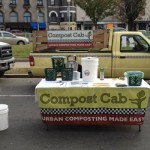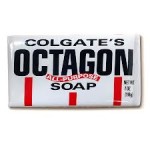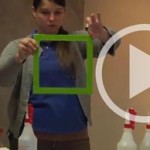“Compost Cab”

 …coming your way soon? Yep, this outfit picks up renters’ composting materials such as food scraps and lint from the dryer on a weekly basis. Here’s its website where renters can send an email indicating interest in the service once in your neighborhood. One of its logos appears at the left.
…coming your way soon? Yep, this outfit picks up renters’ composting materials such as food scraps and lint from the dryer on a weekly basis. Here’s its website where renters can send an email indicating interest in the service once in your neighborhood. One of its logos appears at the left.
A couple of weeks ago I spotted a piece in The Washington Post titled “Renters Can Also Go Green” (linked) where I learned of Compost Cab, among things.
Judith Barrow, of the Washington Sierra Club, is currently writing a guide on sustainable living. Her tips for renters would likely help you reduce your energy bill and carbon footprint without necessarily incurring owner-type costs.
One idea involves looking inside your fridge for its temperature controls. Barrow suggests moving the fridge’s temperature to 37 degrees. Of course not all fridge items want to be so cold when served. Take Guinness, for example. Recommended serving temperature is 42-43 degrees. (I know—I was just at St. James Gate Storehouse having a draught with signature foam shamrock at the Gravity Bar.)  Well, eh, anyway, she suggests your freezer set at 3 degrees is perfectly adequate.
Well, eh, anyway, she suggests your freezer set at 3 degrees is perfectly adequate.
Question: Have you thought about the indoor air quality of your rental digs? Arraying some house plants around the place will do wonders. Surely we’ll be doing that in the new Formation Building—something perhaps for the Environmental Missions Commission to take on? For certain, we’re already addressing indoor environmental quality for the Formation Building from standpoints of mechanical and natural ventilation planning and execution as per the LEED Prerequisite, Minimum Indoor Air Quality Performance.
Among other of Barrow’s suggestions that help reduce the effects of high summer heat transmission through windows and walls, and high energy costs attributable to the air conditioning offset, is acquiring a larger, broad leaf plant. Consider a rubber plant or Schefflera on a stand placed at south- or west-facing windows. Let its leaves deflect and absorb some of the heat coming through the glass. Of course mini-blinds help mightily, but the subject was indoor air quality.
Another tip for better air is to rid yourself of household cleaning supplies that contain toxic chemical ingredients, replacing ‘em with organic versions; those that might contain orange or lemon citrus, for example. Sometimes the cleaner is just a throw-back brought forward, such as the Colgate’s bar soap.
We’ll be pursuing this strategy in a big way for the Formation Building, and the entire St. Margaret’s campus, hopefully earning a point along the way for the LEED Innovation & Design credit called Green Cleaning.
 Now, if you want to make some of your own plant- or mineral-based household cleaners, give a look at local hardware store K&B True Value’s website for some entertaining, informative and very locally produced workshop videos on brewing up environmentally friendly products. Watch and listen to Kelsey at the link here. She’s great and really cares! I’ve talked with her. (Unfortunately, K&B has pulled the video link. Sorry. It was excellent for its “home-made” (read: authentic) quality.
Now, if you want to make some of your own plant- or mineral-based household cleaners, give a look at local hardware store K&B True Value’s website for some entertaining, informative and very locally produced workshop videos on brewing up environmentally friendly products. Watch and listen to Kelsey at the link here. She’s great and really cares! I’ve talked with her. (Unfortunately, K&B has pulled the video link. Sorry. It was excellent for its “home-made” (read: authentic) quality.
The Post ought to feature K&B True Value and its owners and staff as folks running a business that’s full of suggestions for a greener lifestyle—both renters and homeowners alike.